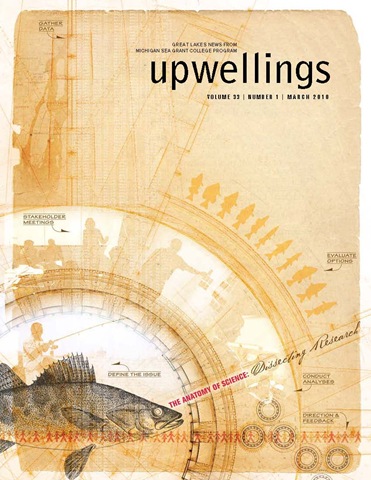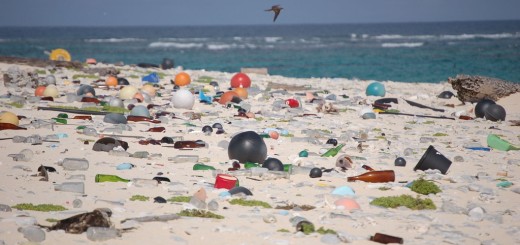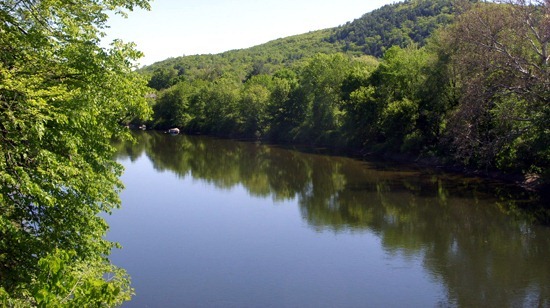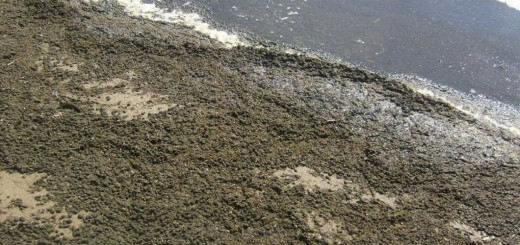Traditional Soil Lifts Reduce The Same As Prefabricated
1
Michigan’s Gull Lake (Credit: John Dreyer, via Flickr)
Along the shorelines of more than 11,000 lakes in Michigan, erosion is an issue. To minimize it, erosion-control structures are built by homeowners living on lakefronts, contractors and the state.
A 2006 report from the Michigan Department of Natural Resources found that gently sloped soil with natural vegetation reinforces shorelines better than other materials, like rubble, because slopes are better at dissipating wave energy. Rubble, or rock fill, creates more erosion in different lake areas because wave energy is directly reflected to them. This knowledge spurred the development of new shoreline structures, including prefabricated soil lifts. With little information on the effectiveness of the new structures, the Michigan State University Extension designed a study to learn more. Their findings have since been published in a free bulletin available online.
“At the time we started doing this, prefabricated soil lifts were new on the market,” said Jane Herbert, district water quality educator. “There were lots of questions about them and that was a driver for the study.” The study ran from June 2011 to September 2013, comparing a shoreline built with traditional soil lifts to one built with prefabricated ones.
In addition to comparing the usefulness of each lift, the study’s procedures doubled as training for the Michigan Certified Natural Shoreline Professional program. The program certifies shoreline contractors and others who want to learn about controlling erosion through bioengineering.
“I wanted to be able to have some data to share with contractors who are considering soil lifts for eroding banks,” said Herbert.
So she and others in the program set out to do a side-by-side comparison of two areas of restored shoreline. Both areas, installed on Gull Lake’s shoreline near the Kellogg Biological Station, used encapsulated soil lifts. One shoreline area was installed in a traditional way, while the second utilized prefabricated lifts. The two sections were installed side by side, each about 40 feet long.

A completed slope of soil lifts, July 2011. Credit: Jane Herbert, Michigan State University Extension
Typically, soil lifts lay on rock bases and are made with soil layers wrapped in biodegradable fabric. The wrapping makes the layers stackable, so that soil sections may be placed on top of others. Seeding is applied and the lift is left to settle. Over time, the seeds germinate and the soil slumps, creating a reinforced natural shoreline with native plants giving stability.
“A traditional lift going in – a form will be filled with soil and then seeded. Pull the forms, do it again and again. Each lift is about a foot deep,” said Herbert. “And each one can go back about seven or eight feet. We went up two lifts.” For the shoreline using prefabricated lifts, the installation process was simpler. Herbert says the pre-made soil sections, with coir fiber logs at their cores, could be tamped in, stacked and seeded in a short time.
“Coir fiber is a coconut husk material. Coir is really common in bioengineering and holds up to water so well,” said Herbert. “It holds up better than straw or other products.”
But despite the advantage that the prefabricated lift had in terms of initial construction, the study revealed that there wasn’t much difference between the two lifts’ performance.

Section of restored shoreline, summer 2013. Credit: Jane Herbert, Michigan State University Extension
“Physically, both lifts performed fine under wave and ice conditions,” said Herbert. The average percentage of vegetative cover for the two lifts was tracked for each year and varied by only a few points. Herbert notes that the findings are beneficial, because they help those wanting to install a shoreline make an informed choice.
“It’s really hard to do shoreline work. It’s not much to mess around with,” said Herbert. “My goal for this was – I’ve got this site. Do I want to do traditional or pre-fabbed? I’ve got this budget, this amount of time.” So for a project with a tight deadline and a flexible budget, Herbert says prefabricated lifts would work well. For those with more time and less funds, traditional lifts are a better option.














[…] Just the fact that someone was around to capture the lake’s drainage is neat, as most north Alaskan lakes fill and empty without much fanfare. In addition, instead of draining to the sea through some underground channel, scientists found that the lake owed its changes to the combination of rising water levels and shoreline erosion. […]